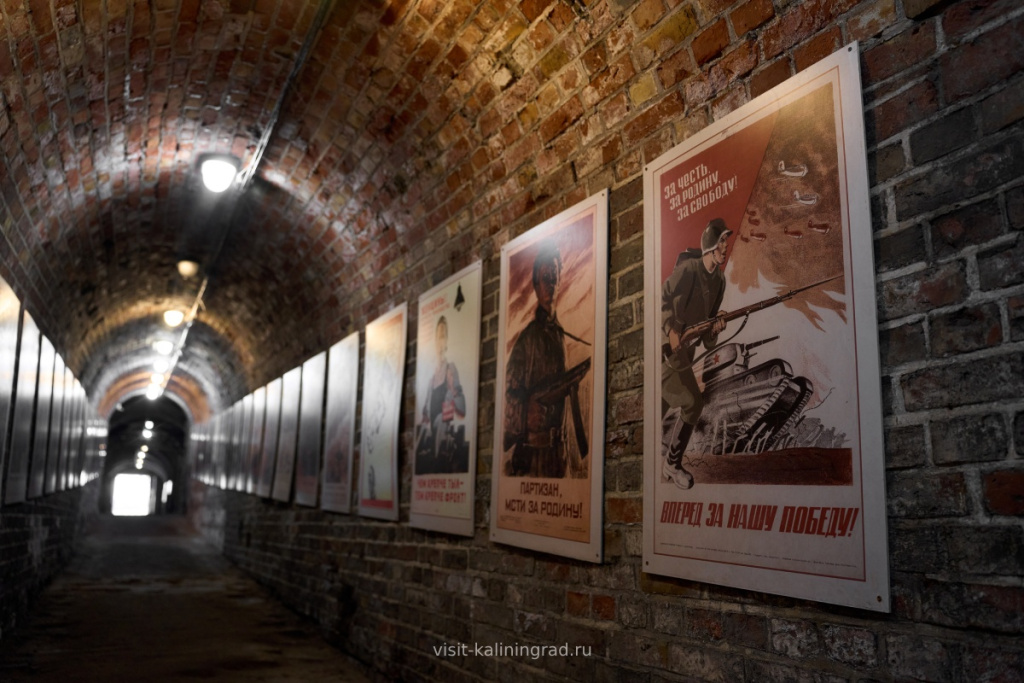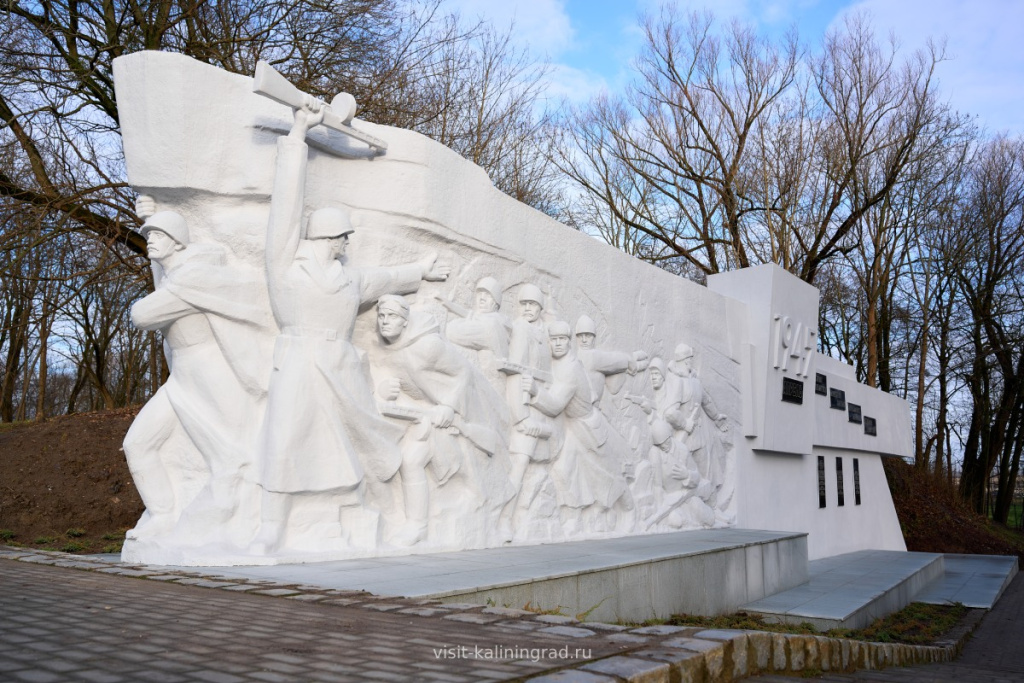(Friedrich Wilhelm III) – originally Gross Charlottenburg. Fort No. 5 was 215 meters long and 105 meters wide hexagon elongated along the front, which had brick, sand, concrete and earth flooring. The 20 meters wide and 5 meters deep moat was as a ditch on the approaches to it. The entrance was protected by a powerful concrete emplacement. The fort was surrounded by trees and shrubs for masking. Two casemates were adjoined the fort fr om the flanks for personnel sheltering and ammunition storage. The garrison located in the fort consisted of about 300 officers and soldiers armed with 8 guns, 25 mortars and 50 machine guns. The single-storey central building includes military barracks, a hospital, a kitchen and also ammunition, food and equipment depots. Two inner yards served as shelters for guns and mortars. All underground casemates have vaulted roofs and are made of repeatedly baked bricks. Central and lateral posterns-corridors were used as ways across. Artillery firing positions with shelters for gunners and elevators for ammunition lifting, as well as observation structures were located on the earthen picking shaft. Shortly before the city assault, from April 2 to 5, a battery of 280-millimeter guns was bombarding the fort. A special commission will later reveal 73 hits and only two holes. They appeared only wh ere the group hit occurred.

Among the Königsberg forts, the fifth one was holding the longest. Located on the direction of the main attack of the 43rd Army, it put up a fierce defense. The enemy’s firepower fired on the important road to Rauschen (now Svetlogorsk), while troops marched along it bringing ammunition. On April 6, the assault detachments of the 801st and 806th rifle regiments came close to the fort and blocked it. By blocking the fort, the battalions suffered heavy losses, and from the second half of the day on April 6 the battalion of the 732nd Rifle Regiment stormed the fort. For the whole day, the battalion fought for the fort conquest, but did not achieve significant success. At about 7 p.m. on April 7, it was replaced by the battalion from the 550th Rifle Regiment of the 126th Rifle Division. On the morning of April 8, 280-millimeter guns was sent in the rear of the fort. The guns crew opened fire on the concrete emplacement at the fort entrance. The first shell hit the wall of the fort military barracks and broke it. Other seven shells hit the target. The shells did not break the concrete mass, but were able to split it. After a stubborn battle, the garrison of the fort capitulated. 15 soldiers of the Red Army were awarded the highest award - the Golden Star of the Hero of the Soviet Union. Their names are immortalized on a memorial stone.

After the war, Soviet sappers used a split concrete emplacement to destroy the ammunition they found, and its current state is a consequence of those explosions.
Today the there is ine of the most popular museum «Fort #5», and reconstructions are carried out as well.
Schedule
Daily 10:00-19:00


